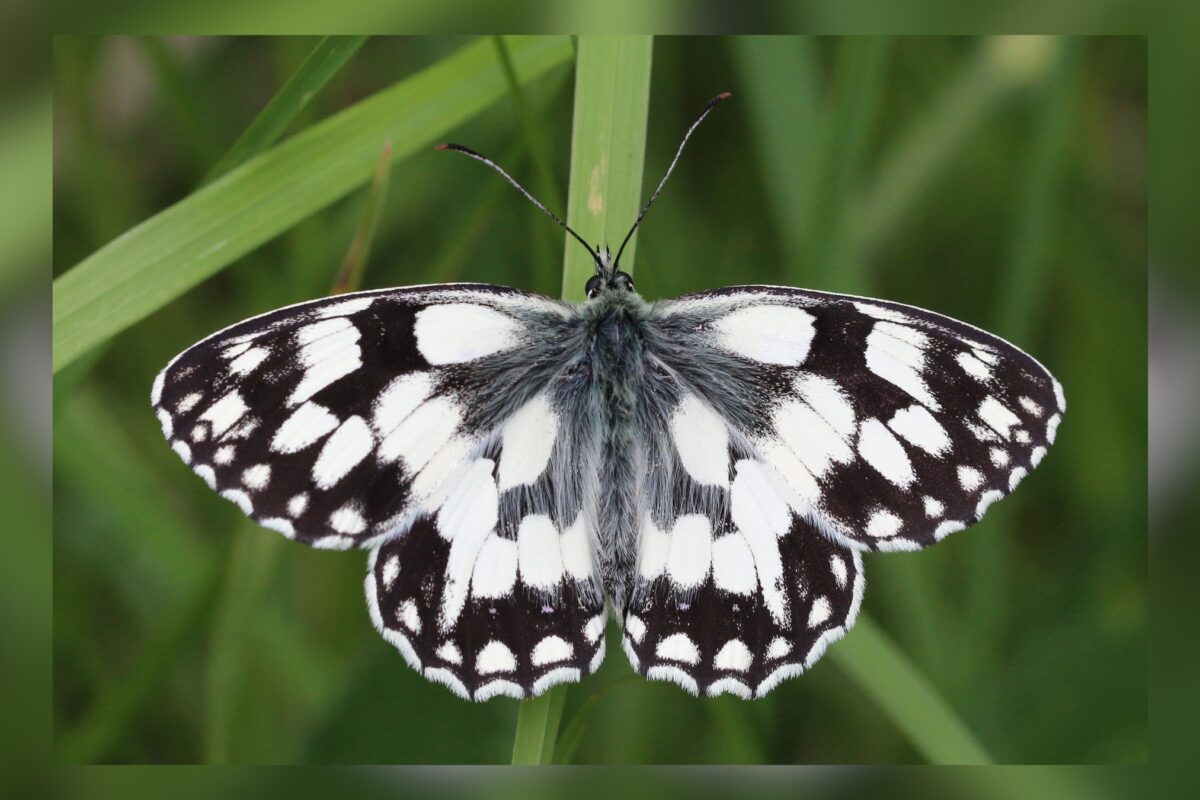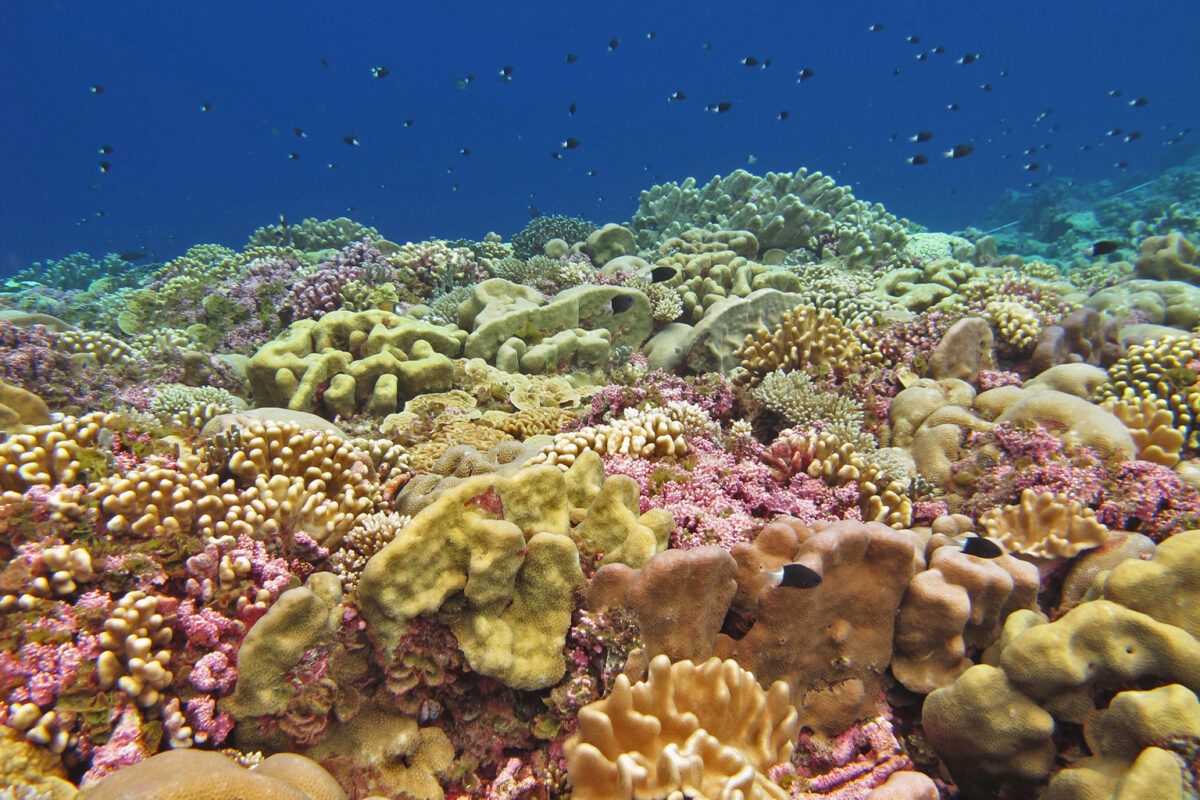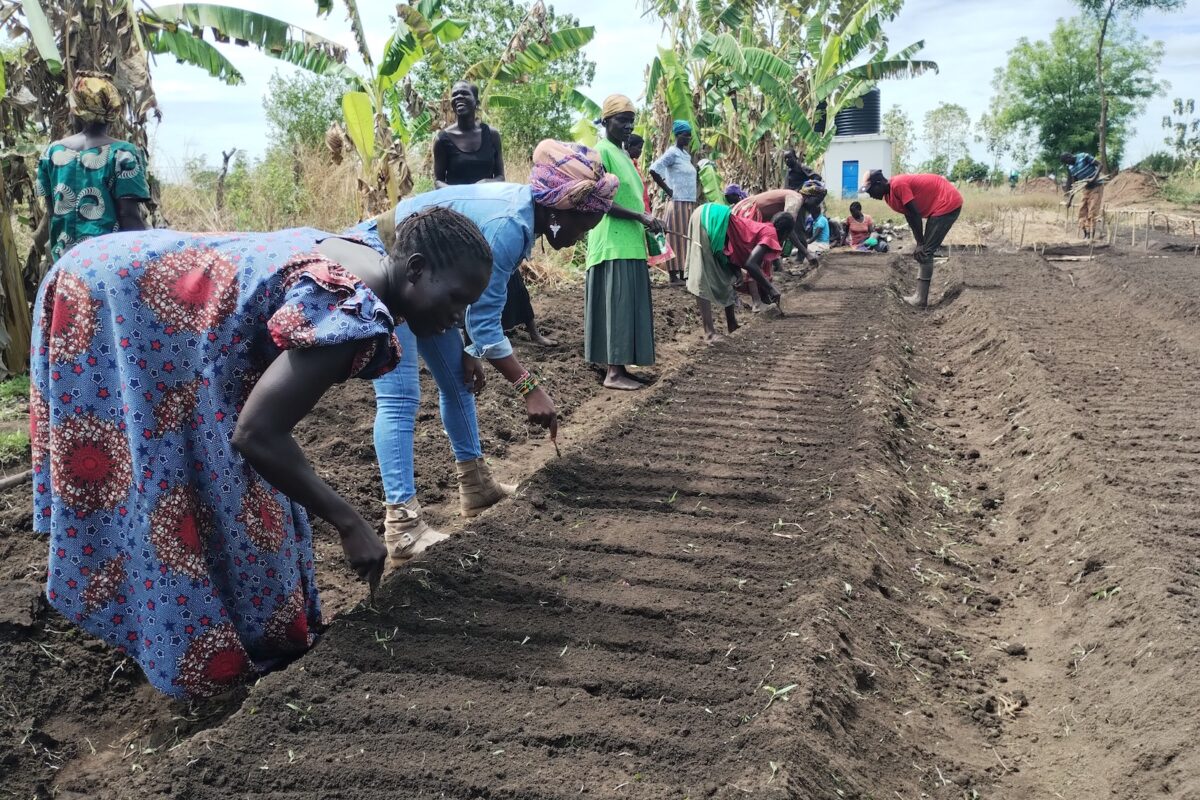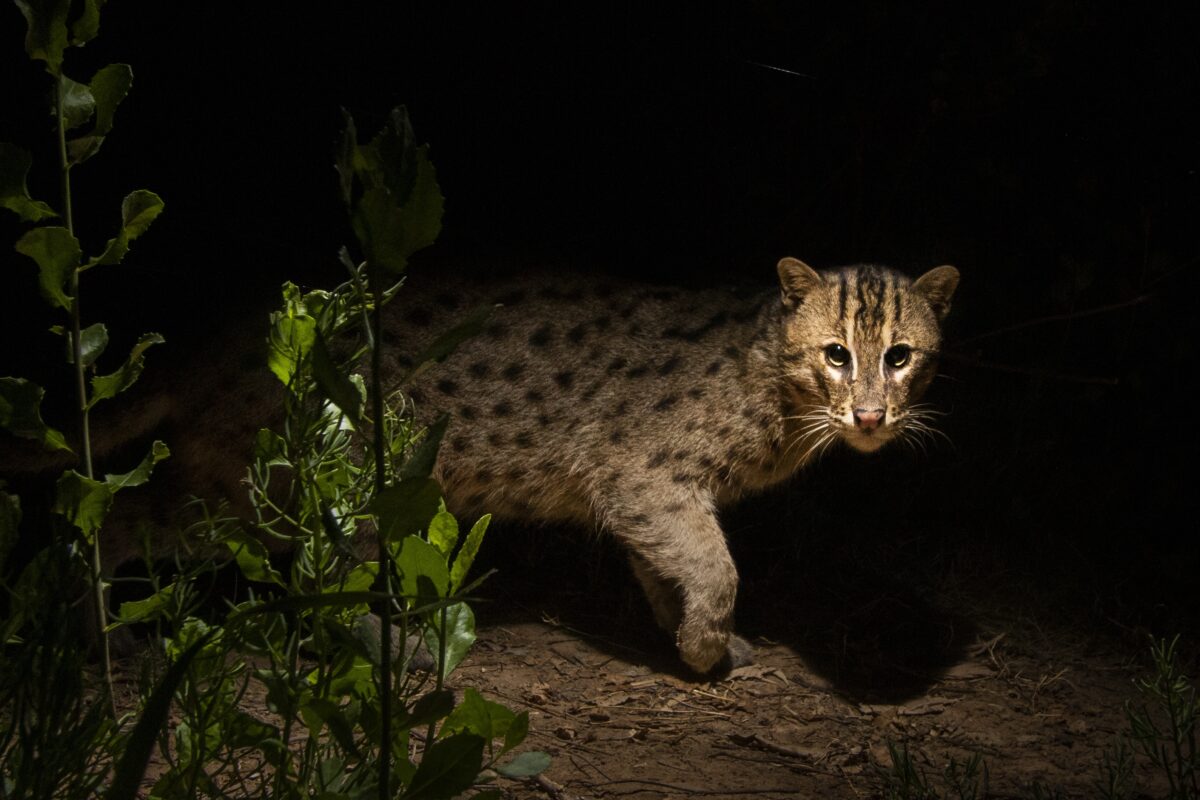- As climate change rapidly transforms ecosystems, it threatens to wipe out vital species, potentially leading to ecosystem collapse.
- Islands, to which many species from elsewhere can’t disperse naturally, are particularly vulnerable to these threats.
- In a recent study, scientists argue that assisted colonization, where species from neighboring regions are introduced to better cope with the changing climate, could help the forests of Great Britain adapt to the rapidly changing climate.
- Some conservationists say that assisted colonization is a proactive way of thinking about conservation in a changing world, rather than more reactive approaches such as species reintroductions.
From Shakespeare’s plays to William Wordsworth’s poetry to J.R.R Tolkien’s fantasy realms, Britain’s lush green forests are described as a paradise of trees. Thousands of species have called these oak, hazel, beech and pine woodlands home for millennia. But as human-caused emissions warm up the planet, many of Britain’s iconic species are at risk: a 2023 State of Nature report finds that one in six of the 10,000 species assessed are at risk of being lost from the U.K. due to the climate crisis.
As climate change forces species to shift their ranges and find new refuges, others may take their place so that key ecosystem services, such as pollination, soil nutrient cycling and carbon storage, can keep going. However, in islands like Great Britain, where most species can’t naturally disperse due to the sea barrier, the loss of vital species may mean ecosystems can no longer function. This begs the question: Could some humans help disperse species?
That’s a thought conservation ecologist James Bullock, at the UK Centre for Ecology & Hydrology, and his colleague Charlie Gardner pondered over. In a recent perspective published in the Journal of Applied Ecology, the duo suggest that assisted colonization — or introducing species that can better adapt to a future climate — could benefit some geographies to adapt to rapid climate change. They use the hypothetical future forest ecosystems of Great Britain to argue that proactive approaches, such as mass-scale assisted colonization, could be better for conservation in a warming climate than reactive approaches such as rewilding or species reintroduction.
Assisted colonization, also called assisted migration, involves intentionally translocating species beyond their current ranges to potential future ranges, which either they can’t disperse to on their own or their natural dispersal is too slow to keep up with the rapid pace of climate change. The authors argue that this approach could give imperiled species a fighting chance and help ecosystems thrive.

“The study is about starting the conversation, rather than saying this is the answer,” Bullock said. With the climate crisis poised to create new ecosystems across half of the planet by the end of the century, instead of debating whether ecosystem changes are good or not, assisted colonization, he said, “turns that around, and says, can we create novel ecosystems which are beneficial for nature and for people?”
Climate change is already threatening thousands of species with extinction and pummeling ecosystems. The researchers say these changes break up long-standing associations between dependent species. And this could lead to coextinctions — when the extinction of one species leads to the extinction of others that depend on it. No one knows for sure what those reorganizations might look like.
“You’ve got this breaking apart of things — we don’t quite know how it’s going to play out, we don’t quite know what the climate scenario will be, what the exact impacts on ecosystems will be, so it creates a huge uncertainty,” Bullock said. In uncertain times like these, where climate change is outpacing our mitigation efforts, an approach like assisted colonization could be a way of saying “throw away the rule book and try a number of different things, just to be prepared for the unknown,” he said.
“We’re losing species at such a rate that we need to be more … ambitious about what we do in terms of intervening,” said conservation scientist Sarah Dalrymple at Liverpool John Moores University in the U.K., who wasn’t involved in Bullock’s study. “I think assisted colonization is an example of that tide turning … we do need to consider different options.”

Great Britain: An ideal case for assisted colonization
The authors turn to the example of how assisted colonization could be useful in addressing biodiversity threats in islands like Great Britain, which are particularly vulnerable to climate change. About 18,000 years ago, Great Britain was connected to the rest of Europe via Doggerland, a land bridge covered in ice that allowed some species to cross overland for a few thousand years. However, around 9,000 years ago, rising sea levels submerged the land bridge, cutting off most dispersal by terrestrial species from Europe into Great Britain. The biodiversity on the island today is largely thanks to species that crossed the land bridge or were later introduced by humans.
With climate change, studies predict that by 2050, London’s climate will be similar to today’s Barcelona, making it uninhabitable for most current species in Great Britain’s woodlands. Although some species, such as birds, from Europe are moving north to Great Britain, most can’t because the waters of the English Channel and the North Sea serve as a natural barrier. As a result, Britain’s ecosystems are at risk of collapse.
Assisted colonization, where new woodlands are built with species translocated from further south in Europe, can help Great Britain’s forests where nature fails, the authors argue.
“The idea is that, basically, we do assisted colonization by choosing a range of species that should be able to work in the new climate and put them into southern Britain and see how they do,” Bullock said, adding that it’s akin to restoration, but with nonnative species.
Although the study doesn’t identify what species these could be, there’s a risk that introduced species could quickly become invasive, i.e., harmful in some way. So, could assisted colonization cause more trouble than it’s worth? While that could be a risk, Bullock said it could be mitigated by choosing species found in nearby geographies, which he calls “near-native species.”
“Not all nonnatives are equal,” Bullock said. “If you’re thinking about France or further south in Europe, then they’re not that far away [from Great Britain]. They’re often very closely related species, and they’re in very similar types of ecosystems.”
The thought of introducing species into a new ecosystem can be alarming for some people, said Dalrymple, who is putting together a set of practical guidelines for assisted colonization as part of a task force of the IUCN, the global wildlife conservation authority. She’s also a member of the England Species Reintroductions Taskforce, which provides evidence-led advice and guidance on existing and potential species conservation translocations in England.

“Nobody wants to be the person that causes the next chestnut blight,” she said, referring to a fungal disease that devastated chestnut trees in North America, and later Europe, from imported Japanese chestnut trees. But with accelerated climate change, Dalrymple said, “unfortunately, the risk of losing the species is often a lot more likely than the risk of it being the next invasive species.”
The first step in assisted colonization is assessing risks that come with introducing new species: ruling out the chance of hybridization with existing species, invasion, spread of diseases, or other negative impacts. Then, once the species are identified, practitioners try them out in small, controlled areas; they closely monitor the new species to see what impacts they may have on their new environment. Once the risks are well understood, large-scale projects can go ahead.
While the study was a thought experiment on assisted colonization, the idea has been around for years. It’s included in the IUCN’s Reintroduction and Invasive Species Specialist Groups’ 2013 guidelines on reintroductions and other conservation translocations, of which Dalrymple was a member.
There are also a few successes to show. In 2016, Australia ran trials in assisted colonization — the world’s first such trial for a vertebrate in response to climate change — by moving critically endangered western swamp turtles (Pseudemydura umbrina) to cooler wetlands. In the U.S., the stinking cedar (Torreya taxifolia) was introduced a few years ago to the north of its current range; and in a similar experiment in the U.K., two butterfly species were introduced a few kilometers north of their range.
“There’s groups all over the world that are talking about [assisted colonization], so it’s really very exciting,” Dalrymple said.
For a long time, species reintroduction and ecosystem restoration have been the go-to strategies for conservationists. But the study authors argue that such reactive approaches don’t work as successfully in a rapidly changing climate.
“Conservation has often been about preventing extinctions, keeping certain species in place, keeping certain ecosystems or habitats in place … The big problem is that climate change means that past is, in many cases, no longer achievable,” Bullock said, adding that recreating the past shouldn’t be our approach to conservation. “We need to look to the future and rather than just try to resist that future happening, we need to work towards it.”


Dalrymple, once an advocate of reintroductions, learned that the hard way. In the early 2000s, her group reintroduced a rare woodland plant in the U.K., the small cow-wheat (Melampyrum sylvaticum), at six sites that ticked all the boxes for a perfect habitat. Yet it still failed because the macroclimate was too warm and dry for the plant — a factor they hadn’t considered.
“Two decades on, I don’t think this is such a good idea,” Dalrymple said, adding that restoring ecosystems to historic baselines doesn’t make sense anymore. “We need to have these conversations, which sort of go against a lot of what we were told when we were all training.”
While stopping carbon dioxide emissions should still be our first approach to tackling climate change, assisted colonization could be yet another tool to adapt to a changing world.
“We still don’t know enough to say that’s the approach, so I’m very much one for mixing it up and saying there’s no silver bullet,” Bullock said. “We talk about assisted colonization as an adaptation strategy, but it could also be a [climate change] mitigation strategy if it’s allowing natural ecosystems to expand and persist and be resilient to climate change.”
Banner image:In the UK, scientists introduced marbled white butterflies (Melanargia galathea) to a site about 65 km beyond its then-range margins, predicted to be climatically suitable habitat for the species. Image by Charles J. Sharp via Wikimedia Commons (CC BY-SA 4.0).
Citations:
Pinsky, M. L., Hillebrand, H., Chase, J. M., Antão, L. H., Hirt, M. R., Brose, U., . . . Blowes, S. A. (2025). Warming and cooling catalyse widespread temporal turnover in biodiversity. Nature, 638, 995-999. doi:10.1038/s41586-024-08456-z
Gardner, C. J., & Bullock, J. M. (2025). Revisiting the case for assisted colonisation under rapid climate change. Journal of Applied Ecology, 62(5), 1071-1077. doi:10.1111/1365-2664.70027
Ordonez, A., Riede, F., Normand, S., & Svenning, J. (2024). Towards a novel biosphere in 2300: rapid and extensive global and biome-wide climatic novelty in the Anthropocene. Philosophical Transactions of the Royal Society B Biological Sciences, 379(1902). doi:10.1098/rstb.2023.0022
FEEDBACK: Use this form to send a message to the author of this post. If you want to post a public comment, you can do that at the bottom of the page.



